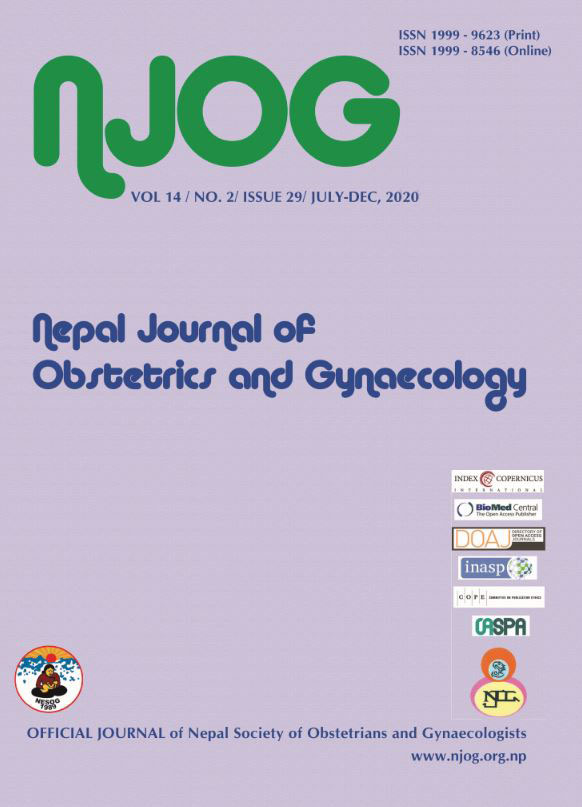Effect of cardiotocographic monitoring prior to induction of labor
Abstract
Aim: To assess the role of intermittent cardiotocographic monitoring of induction of labor while using misoprostol in pregnancy of 41 weeks or more.
Methods: This is hospital based descriptive study conducted from December 2017 to March 2018. CTG was done before each transvaginal administration of misoprostol in 113 primigravida patients at Paropakar Maternity Women’s Hospital in Kathmandu. Variables studied were indications of induction, mode of delivery, Apgar score and neonatal admissions.
Results: 11.5% of CTGs were non-reassuring who underwent Cesarean Section and had significantly low Apgar at 1 minute but only 46% of neonates required resuscitation. Liquor was thick meconium in 61.5% of non-reassuring CTGs. Total twelve (10.6%) of neonate needed resuscitation of which six (6%) neonate in reassuring CTG where as 46.1% of neonate needed resuscitation in non-reassuring. NICU admission rate was 7.96% in total and 33.3% of neonate with non-reassuring CTG who needed resuscitation. However there was no neonatal mortality during this period.
Conclusions: Intrapartum cardiotocography can prevent fetal compromise early.
Keywords: Apgar score, caesarean section, cardiotocography, induction, resuscitation
Downloads
Downloads
Published
How to Cite
Issue
Section
License

This work is licensed under a Creative Commons Attribution-NonCommercial 4.0 International License.
Copyright on any research article in the Nepal Journal of Obstetrics and Gynaecology is retained by the author(s).
The authors grant the Nepal Journal of Obstetrics and Gynaecology a license to publish the article and identify itself as the original publisher.
Articles in the Nepal Journal of Obstetrics and Gynaecology are Open Access articles published under the Creative Commons CC BY-NC License (https://creativecommons.org/licenses/by-nc/4.0/)
This license permits use, distribution and reproduction in any medium, provided the original work is properly cited, and it is not used for commercial purposes.



